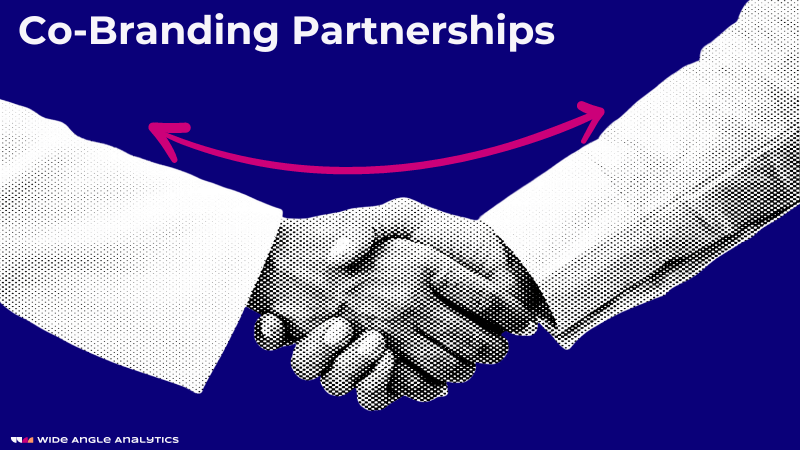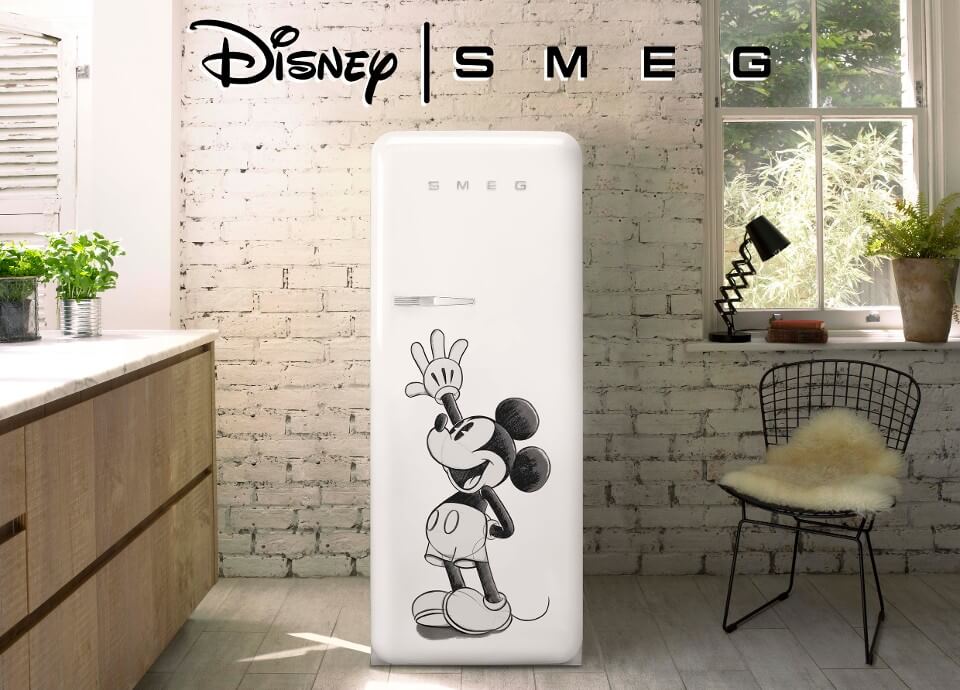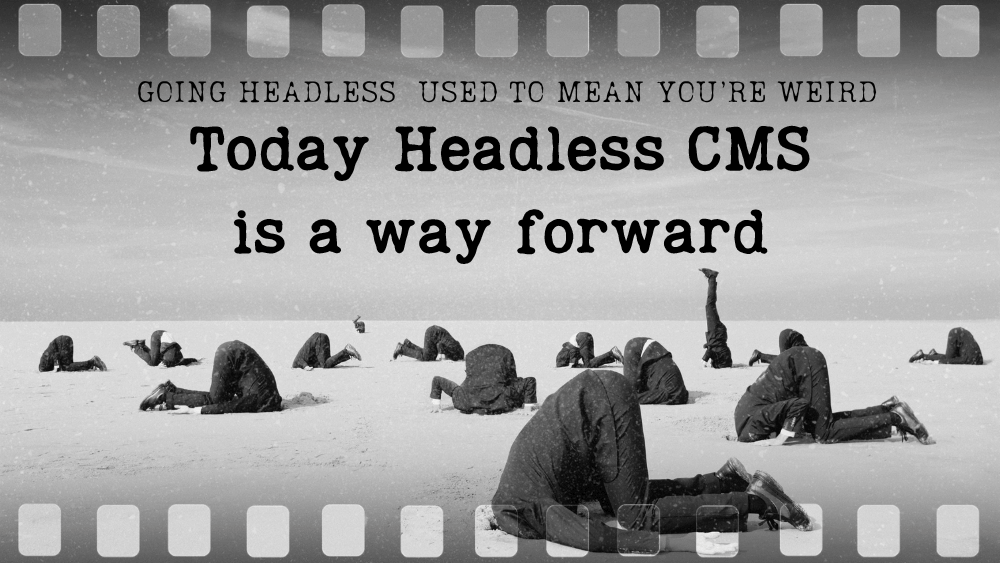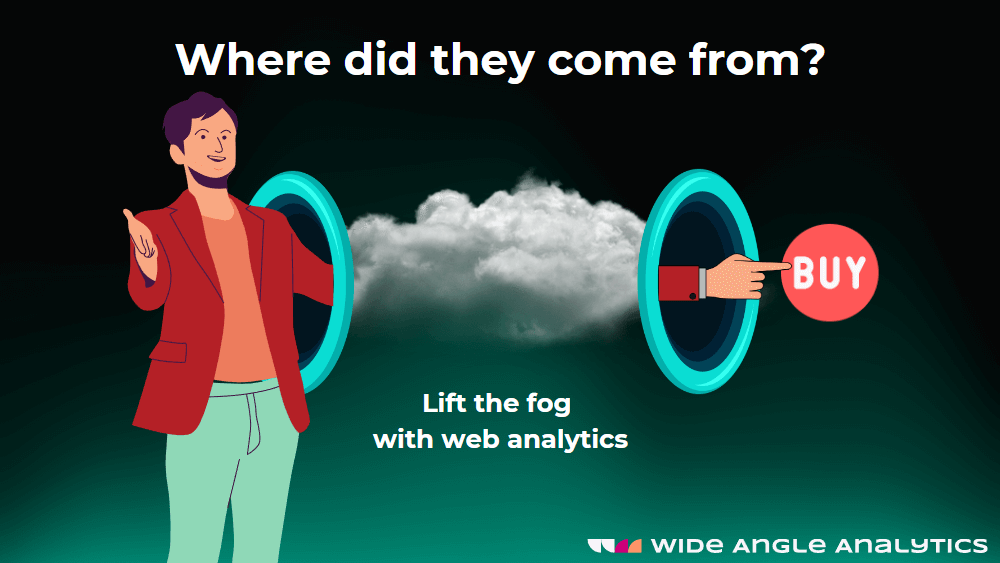If you’ve been seeing pink lately, it’s no surprise. In the run-up to the release of the Barbie movie, bright pink Pantone 219 has been hard to avoid.
Pink Xbox consoles. Pink Oodies. Pink nail polish. A real-life dream house. The Barbie marketing team have gone above and beyond for the movie. Over 100 brands are involved in Barbie’s marketing campaign, sparking an online phenomenon and buzz never before seen for a Hollywood blockbuster. And the results speak for themselves.
‘Barbie’ had 13 million online searches worldwide in the month before its release, more than doubling month on month. At the time of writing, #barbiemovie2023 has over 545 million views on TikTok — a number which has more than doubled over the past week since the movie’s launch.
These efforts are paying off for the movie’s bottom line. Barbie raked in a hefty $162 million over its launch weekend. Continue reading to learn co-branding strategies that help propel businesses, products, campaigns and even movies into Internet stardom.
Understanding co-branding: what is a co-branding partnership?
There’s a nuance here between co-branding partnerships and other brand collaboration types:
- A co-branding partnership is a strategy in which two or more brands come together to create a new product or service.
- A brand partnership involves a long-term commitment and mutually beneficial relationship.
- A brand collaboration is a more informal relationship between brands, influencers and celebrities working together on a short-term project or campaign.
The Barbie movie is a prime example of the power of co-branding partnerships. This marketing strategy is not new. Nor is it limited to the realm of dolls and movies; it extends across various industries, from homeware and lifestyle brands to adventure sports.
For example, all the way back in 1956, an early instance of a co-branding partnership occurred between Renault and jewellers Jacques Arpels. Jacques Arpels applied their craftsmanship in a unique application: a Renault Dauphines dashboard. Harmonising the art of jewellery making with that of automotive engineering, the Dauphine was an overnight success.
Since then, we’ve seen co-branding partnerships of all shapes and sizes, from unlikely collaborations like Disney and Smeg to the combined efforts of mighty tech giants like Uber and Spotify.
Trend analysis: how many companies are taking the co-branding plunge?
Over the last 5 years alone, interest in co-branding partnerships has soared upwards. Online searches for ‘co-branding meaning’ have increased by 300%, showcasing a growing awareness and interest among consumers and businesses alike.
Co-branding is becoming almost omnipresent on the Internet. Big-name multinational brands dominate news websites with novel and entertaining co-branding campaigns of all shapes and colours. And virtually all companies now use Internet marketing partnerships and affiliate programs, with 74% stating this is a high priority for their business.
Larger partnerships, like co-branding, are favoured over collaborations. Roughly 34% of leading brands have 50 to 99 partners, while 67% of brands have less than 100. Only 2% of brands surveyed by Partnerize said they partner with more than 1,000 brands.
Impact on consumers: audiences overwhelmingly enjoy co-branding partnerships
The consumer experience of co-branding partnerships brings to life why it’s such a successful strategy. Co-branding partnerships are shown to be viewed extremely positively by consumers: 71% say they enjoy co-branding partnerships.
Clever co-branding plays on the products, services and messaging of different synchronous brands to entertain and delight the audience, building a positive association with the companies involved. Brands that use this strategy generate favourable and widespread awareness, boost their reputation and influence consumer buying decisions.
Here’s an example from the unlikely partnership of Coors Light and National Geographic. In 2018, they collaborated to release a series of video ads taking place in Iceland. The campaign reached 10.5 million people and lifted both brands’ favourability by 6.8%.
Let’s work our way down the marketing funnel to see the impact successful co-branding can have in creating a positive customer journey.
Top of the Funnel (TOFU)
At the TOFU stage, co-branding partnerships elevate brand exposure and improve customer awareness by as much as 20%.
Combining efforts with another brand provides access to its audience and vice-versa. Where a partner brand has built a good reputation among an echelon of fans, you can ride off the back of their success (and equally, they gain the same benefit from accessing your own loyal following.)
Bottom of the Funnel (BOFU)
Increased brand awareness trickles down to favourable BOFU results. A study reveals 68% of consumers make buying decisions after viewing partnership campaigns.
This makes total sense when you consider the human psychology at play. Consumers are more likely to buy from a brand they know and trust, i.e. which they’ve seen advertised everywhere, for example, through a successful co-branding campaign with another brand they are familiar with.
How co-branding partnerships ignite business growth and revenue — sometimes into the billions
Enhanced audience favourability. Widespread brand awareness. Strengthened credibility. This all translates into a better bottom line for businesses utilising co-branding strategies. Done well, it catapults brands towards remarkable growth and profit.
More than half of marketers say brand partnerships drive over 20% of total business revenue — a percentage that is increasing year on year. The biggest and best co-branding partnerships can see numbers in the billions.
5 essential factors for co-branding success
Co-branding partnerships are lauded for their innovative takes on the products, services and companies involved. That being said, there are some consistent takeaways that all marketers and business owners can learn from analysing successful co-branding partnerships.
Let’s dive into the common themes that make a co-branding partnership successful, including examples of powerful co-branding strategies in action.
1. Shared values
It’s important to ensure the brand you’re collaborating with shares the same values as yours. Any deviation from your company values risks diminishing the brand identity that connects you with your existing audience.
You may lose integrity and trust if the brand you collaborate with has values that seem in conflict with yours. (Imagine an environmental group collaborating with an oil company, for example.)
Contrastingly, finding a co-branding partner with the same values can lead to a winning synergy of creative products, services, content and campaigns.
Example: GoPro x Red Bull
Perhaps the biggest example of this is GoPro and Red Bull. Both brands value adventure, action, extreme sports and being brave and bold.
For years, GoPro and Red Bull have collaborated to fund and film action sporting events involving some of the biggest athletes and adventurers from all corners of the globe. This gripping, edge-of-your-seat content has fueled an engaged audience of 22.6 million viewers across their combined YouTube channels.
2. Complementary target audiences
One of the key reasons to instigate a co-branding partnership is to widen your audience reach. However, there are caveats to this.
There’s no point in reaching an audience that your product and brand aren’t appropriate for. Choosing a brand partner whose audience aligns with yours, and therefore may become a customer, is an essential point to consider before entering any co-branding agreement.
Example: BMW x Louis Vuitton
When you think ‘car’, ‘handbag’ isn’t necessarily the next thing that springs to mind. But in the case of BMW and Louis Vuitton, a co-branding partnership made perfect sense when the target audience was taken into account.
Both brands offer luxury, high-ticket products. Their audiences value the finer things in life, including regular travel and holidays, and they don’t mind spending a little extra for the best of the best from a high-end market leader.
In their co-branding partnership, BMW created a sports car model called the BMW i8. Meanwhile, Louis Vuitton designed an exclusive, four-piece set of suitcases and bags fitting perfectly into the car’s rear parcel shelf and matching its sleek, black aesthetic.
The complementary luxury collection was met with positive attention from customers of both brands.
3. Brand reach and reputation
The results you see from a co-branding partnership also depend on the reputation of your brand partner. What’s their social media following like? Do they have a positive reputation and engaged audience? These kinds of questions are important to consider, as they will impact the results you see from the collaboration.
Example: Lego x Disney
It’s hard to imagine two brands with more international leverage and goodwill than Lego and Disney. And together, they’re a force to be reckoned with.
The colossal co-branding partners have collaborated on numerous products and campaigns over the years, from a Disney Castle collectable set to Mickey and Minnie Mouse lego figurines. Most recently, both brands celebrated Disney’s 100th anniversary by launching the Lego-built Walt Disney Tribute Camera.
4. Provide value to both brand audiences
As with any marketing campaign, it’s important to showcase the value you’re providing to your target customer. The added complexity of a co-branding partnership is you have two customer bases to take into account.
Be sure to carefully consider how you’re adding value to both brand customer avatars before heading off in a particular direction with your product or campaign — you don’t want to alienate either audience.
If pulled off correctly, you’ll access and connect with a larger pool of potential customers than ever before.
Example: 7-Eleven & DoorDash
A perfect example of this is 7-Eleven and DoorDash. 7-Eleven customers want convenience store staples and snacks that are readily available, 24/7. DoorDash customers want the convenience of food and amenities delivered to their door.
By combining their efforts, 7-Eleven gained access to a wider pool of customers who lived further afield from a 7-Eleven store. Meanwhile, DoorDash could now transport 7-Eleven offerings to create greater value for its wide pool of customers.
5. Set up effective tracking with your brand partner
Another crucial aspect to consider when implementing a co-branding partnership is how you will measure and track the campaign’s success. Without this, you won’t have insight into whether the campaign is working, what tactics are most influential to business growth and what areas require improvement.
Here are some tips for ensuring you successfully and accurately track your co-branding partnership campaigns:
- Depending on the co-branding partnership tactics you use, you can measure different KPIs using website analytics tools, email marketing software, social media analytics tools, landing page platforms, CRM software — or a combination of any/all of these.
- Be sure to communicate clearly with your co-branding partner about how you’ll track and coordinate your reporting data.
- You can use UTM parameters, custom links or tracking codes to accurately identify and attribute the traffic and conversions from your co-branding partnership campaigns.
- When analysing campaigns, look at both qualitative and quantitative data and information. Consider quantifiable metrics on your analytics platforms, but also take into account customer feedback and comments, such as through online review platforms or by conducting surveys.
No Cookie Banners. Resilient against AdBlockers.
Try Wide Angle Analytics!
Co-branding challenges and risks
In contrast, a badly thought-out or poorly-coordinated collaboration could have an undesirable effect, to say the least. It could potentially alienate your target audience, muddy your brand identity and deplete sales.
Here are some warning signs that this isn’t the co-branding opportunity for you, including examples of some real-life co-branding partnership flops.
1. Different values or target markets
Inconsistent branding can damage your company’s reputation and credibility. It can confuse your audience and, at its worst, gives the impression of dishonesty and a lack of integrity.
Example: Target and Neiman Marcus
An example of co-branding gone wrong for this reason is Target’s collaboration with Neiman Marcus.
Target represents cost-effective clothing that’s on-trend without breaking the bank. Meanwhile, Neiman Marcus values luxury, expensive and edgy attire.
Their co-branding partnership collection failed to hit the ground running as it alienated Target’s customer base, not taking into account their price point or less-edgy style preferences.
2. Your customers have a negative perception of the partner brand
If a brand has negative connotations in the mind of your target customer, it might not be the best company to partner with.
You might think that’s obvious, but sometimes the negative associations your customer has about another brand may go unnoticed — until it’s too late.
Outwardly, your co-branding partner may seem ideal. But on further research into your customer’s opinions, you may find otherwise — that the brand is associated with a bad trait, negative experience or some other detrimental quality.
Example: Forever 21 and Atkins
Atkins and Forever 21 imagined they’d found a synchronous co-branding partner. They both represented lifestyle brands and their target customers valued healthy living and looking and feeling good.
However, in practice Forever 21’s customers didn’t love being sent weight loss bars. The complaints rolled in about how Forever 21 was body-shaming them. Awkwardly, as the co-branding partnership wasn’t properly explained to customers, many even assumed that the bars were being sent specifically to target plus-sized shoppers.
The future of co-branding partnerships: will Barbie be a one-of-a-kind success?
What is the future of co-branding partnerships? Can we expect an onslaught of more brand collaborations of the size and scale of Barbie? Or is Barbie a one-off in co-branding and marketing brilliance?
While the financial clout of Mattel and Hollywood isn’t exactly in every marketing department’s grasp, lessons are nonetheless being learnt left, right and centre from the Barbie movie’s campaign.
More than ever, it’s clear that co-branding partnerships are a marketing must-have in the digital age. Businesses are near-unanimous in their agreement that collaborating in some capacity with like-minded brands is essential, and almost all companies use brand partnerships (or at least aspire to) in their marketing strategy.
From the $162 million launch weekend of Barbie to the millions of GoPro and Red Bull YouTube subscribers, it’s evident that a successful co-branding partnership can be a golden ticket to a wider audience reach, greater engagement and more sales. Creative co-branding partnerships are shown to innovate, entertain and inspire. They’re viewed overwhelmingly positively by customers and businesses alike.
While the future is never certain, a couple of trends are on the horizon for co-branding partnerships:
- Companies are likely to require whole teams to plan, coordinate and execute branding partnerships. We see this today in the form of internal affiliate marketing teams. This is likely to expand into whole brand partnership teams as the need for these kinds of collaborations increases.
- Co-branding partnerships will move into the Metaverse, with a greater emphasis on AR and VR as creative ways to entertain and immerse audiences. We’re already seeing some big-name collaborations in this manner. For example, Nike Jordans recently integrated with the Fortnite game. The more AR and VR technology evolves and becomes the norm, the more collaborations of this nature will increase.
Businesses and marketing professionals should embrace co-branding as an indispensable tool in their arsenal. By staying attuned to evolving consumer preferences, exploring cutting-edge technologies and fostering genuine connections with strategic brand partners, co-branding can take business growth to ever greater heights.
Lauren Meredith is a seasoned content marketing strategist and writer helping online businesses connect with their audience and maximise organic success. Her SEO content secures #1 positions on Google, features in publications such as The Independent, Yahoo and academic domains, and has won an award at the Digital Growth Awards.







